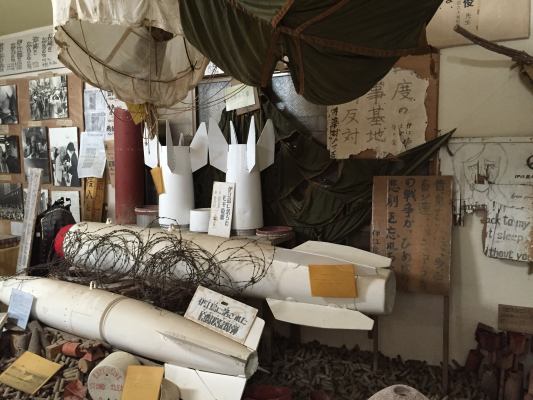Here is a report by Voices’ Buddy Bell, now walking with the Disarm Trident marchers in Georgia, on one of two recent peace walks he attended in the region most threatened by the United States’ “Asia Pivot” (please find his account of the march on South Korea’s Jeju Island here). We appreciated being represented in both actions and we look forward to ongoing relationships with peace activists from Jeju, from Okinawa, and from throughout the region as they resist the present and future consequences of the United States’ dismally predictable pivot into imperial brinksmanship with China.
A Walk for Okinawa – Buddy Bell
Two activists from the anti-base struggle in Okinawa took a ferry in late June to the Japanese main island of Kyushu and began walking from town to town, meeting with citizens, mayors and city councils in an attempt to convince them to disallow the national government’s extraction of their soil. The soil taken from the main Japanese islands is to be used as bay fill in the construction of two new airport runways at Henoko (U.S. Camp Schwab) on pristine Oura Bay, Okinawa Island.
Sarasa and Kamoshita, affiliated with the Nipponzan Myohoji Buddhist order, were joined by about a dozen monks and students along the way, focused both on stopping base construction in Okinawa and on pressing denuclearization in Japan, which means phasing out nuclear power and joining international efforts to eliminate nuclear weapons. As such, their walk traversed through the landscapes of several proposed nuclear power plants along the way to its final stop: August 6 at Hiroshima, on Honshu Island, when and where the first ever explosion of a nuclear warhead – by the United States – took place in the year 1945.
Upon her return to Okinawa, Sarasa attended an August 8 memorial for the deceased former Okinawa governor Takeshi Onaga. Compared to the size of the peace ceremony held in Hiroshima, the memorial began to give me a strong feeling of the gap between Okinawa and mainland. There are no people who feel that war is not over in Japan, but in Okinawa, there are people who feel that war in Okinawa is not yet finished. I think that the best memorial to the Okinawa war is to lose the Henoko base.
Onaga’s death may have bought the activists more time because the governor’s most prominent legacy had been to tactfully sabotage the bay fill scheme until his death. Sarasa points out, “if the Japanese government tries to landfill Oura Bay now, Okinawan public opinion will heat up.”

